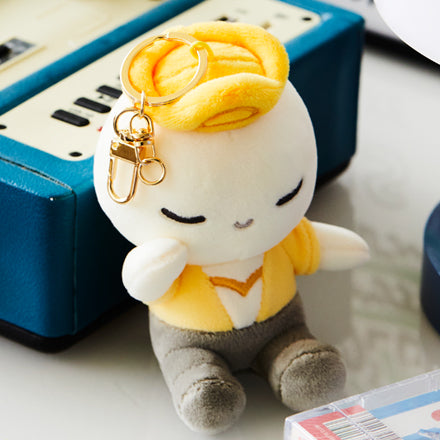
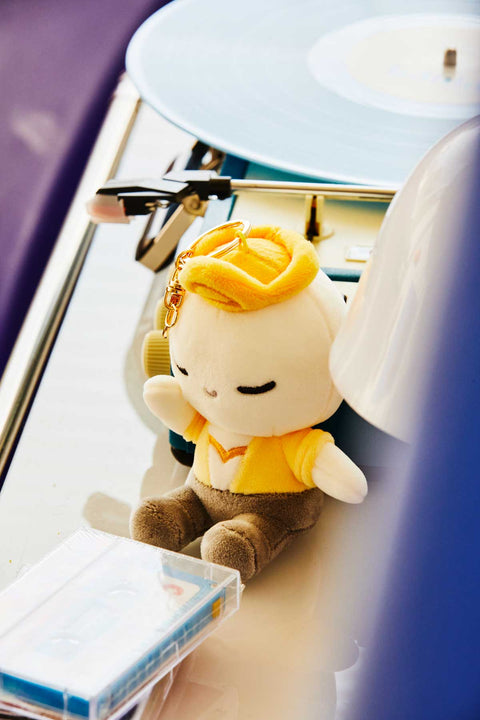
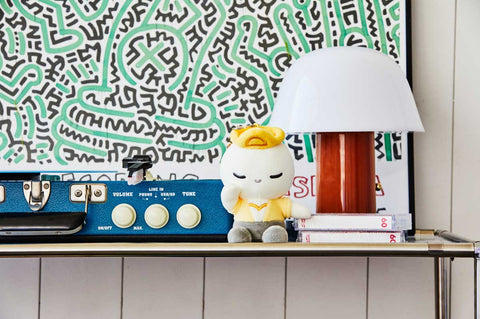
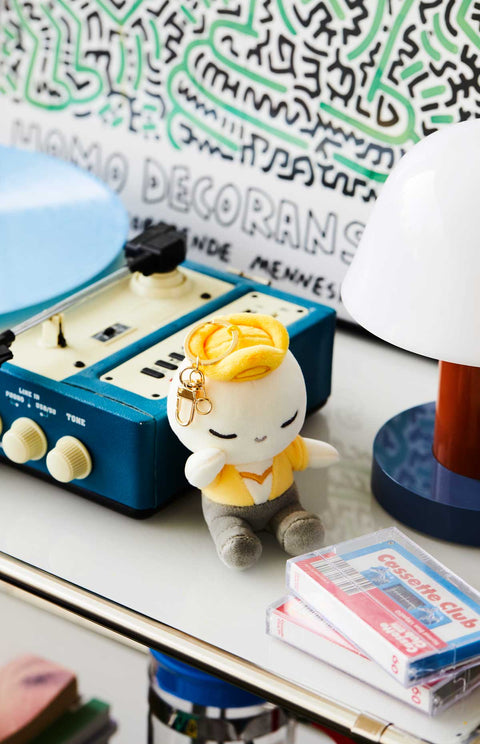
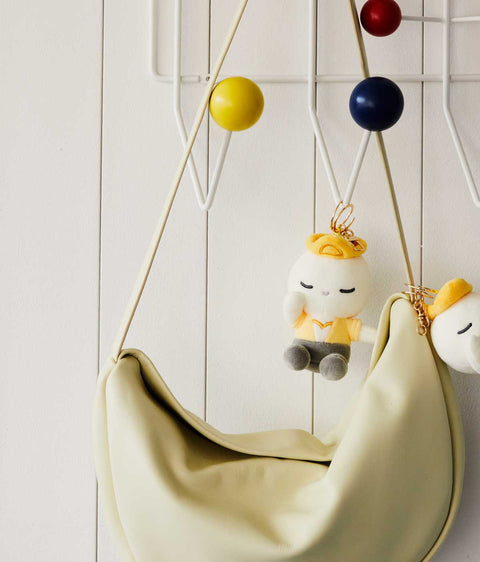
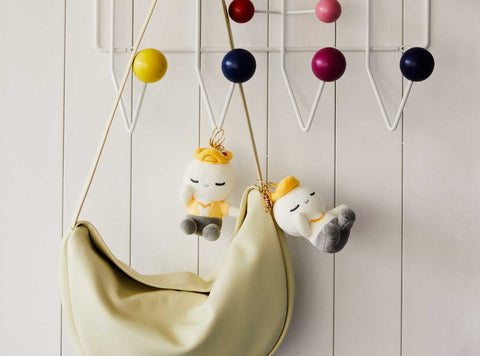
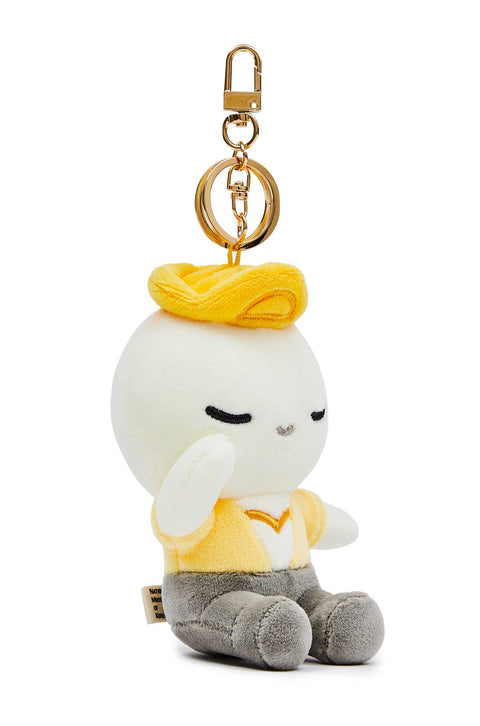
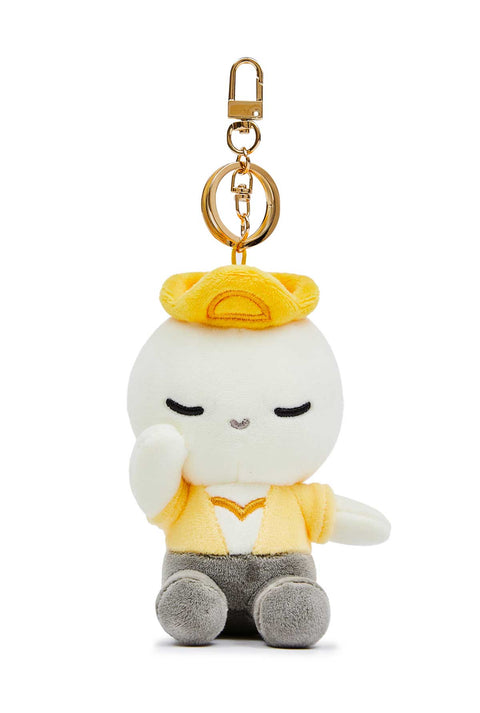
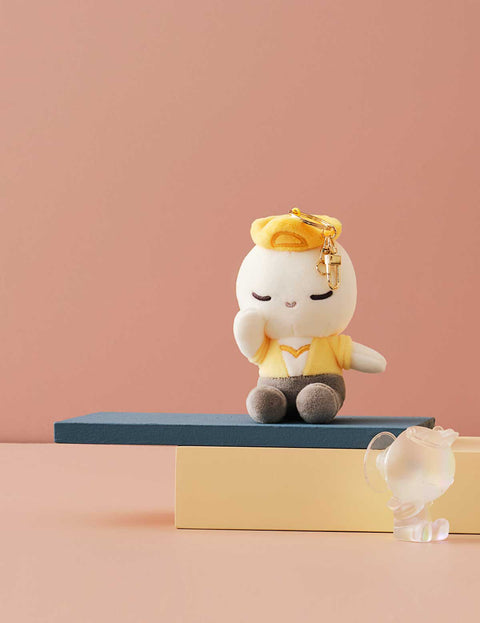
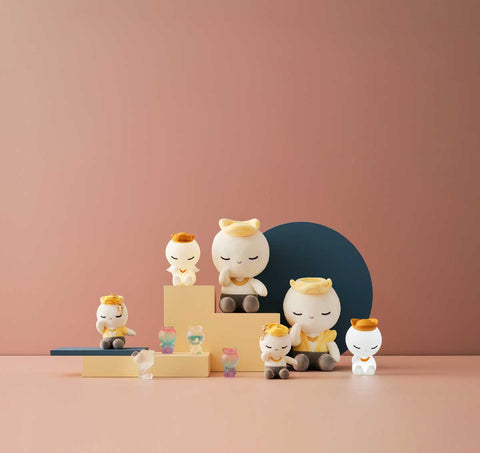
Keyring (Pensive Bodhisattva)(78)
Keyring
(Pensive Bodhisattva)(78)
Product : 60x80x100mm
Weight : 50g(60g)
Concept
This keychain was created to commemorate the first anniversary of the Room of Quiet Contemplation at the National Museum of Korea. It features a new character inspired by the Pensive Bodhisattva sculptures.
Designed to appeal to all ages, the character features a rounded silhouette and sassy expression. It was created with an SD (super-deformed) ratio to be endearing to both children and adults.
Features
Made from 100% polyester plush material, this keychain is super soft and squishy to the touch, yet highly elastic. The fabric has passed safety tests to ensure it’s safe for children.
This versatile accessory can be attached to bags, keys, smartphones, and more, making it a fun way to express your unique style.
Notes
-There may be irregular seams since the finishing process is done by hand. Please note that this is not considered a defect.
-Due to the nature of stitching, there may be slight differences in size, embroidery placement, shape, and finishing quality.
-The unglazed bottom surface, small air bubbles in the clay, black spots from iron, and slight slope differences due to hand-finishing are all characteristic of the kiln-firing process.
Handling Guidelines
-Do not use for purposes other than those intended.
-Keep the product away from heat, flames, and sharp objects.
-If dirty, wipe gently with a soft cloth and allow it to air dry in a well-ventilated, shaded area.
-Avoid using washing machines or dryers, as they may cause deformation.
-Be cautious of color transfer when in contact with dark-colored clothing or accessories.
Relic
This statue strikes a classic contemplative pose: one leg perched up on the other knee, with fingers raised up against the cheek. This pose is quite common in Buddhist sculpture, and it was derived from the young Indian Prince, Siddhartha Gautama, contemplating the nature of human life. In China, such pensive statues were most common in the 5th and 6th centuries, while in Korea they are usually from the 6th and 7th centuries. This Buddhist statue (designated as Korea’s National Treasure No.78) sports a tall crown decorated with a sun and moon. This type of crown originated in the Sassanid Persian Empire, but it was transmitted east via the Silk Road and was adapted as a crown for bodhisattvas. The statue is relatively tall, but the bronze layer is exceptionally thin—as thin as 2 mm—showing that the artisans of the period had developed advanced metal craft techniques. The sophistication of the artistic style and technique is further exemplified by several lifelike details: the benign, delicate smile; the amazingly natural sitting posture; the organic harmony between the body parts; and the dynamic flow of the veil robe and waist rope.

